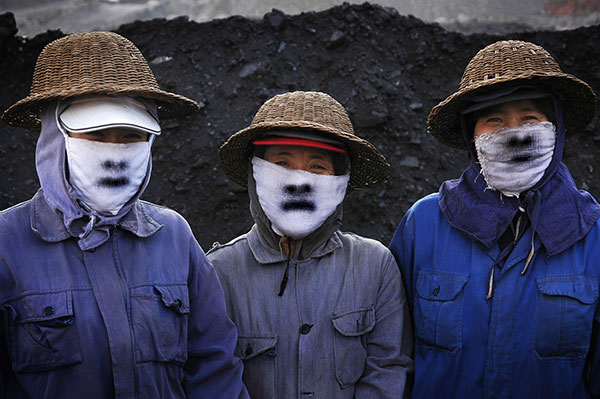A vital link in high-speed growth
Updated: 2015-08-28 08:30
By Cecily Liu(China Daily Europe)
|
|||||||||||
The University of Southampton is one of the three British universities, alongside Imperial College London and the University of Birmingham, partnering the CRRC on railway research at its UK R&D center launched in May. The R&D work will both improve CRRC's overall technology and also help it to develop technology for international expansion.
CRRC and Imperial College London have established an R&D project for modern manufacturing process of high-speed trains, with the intention of improving manufacturing efficiency and reducing costs.
"High-speed rail manufacturing in China is already very efficient and cost-effective, but it is relatively labor intensive, and hopefully with the new research collaboration with us it can become more capital-intensive," says Roderick Smith, a research professor at the Future Rail Research Centre of Imperial College London.
Smith says some of this R&D work may focus on innovative modern manufacturing methods, including novel methods of forming metals that can cope with complex shapes of high-speed trains. Also, it can explore the field of automated manufacturing methods that have advantages for mechanical behavior and aerodynamics, he says.
About 70 percent of this high-speed train manufacturing technology is not yet available on the market, as they are being developed in laboratory conditions, so it may give CRRC a big advantage. The remaining 30 percent of technology already exists in the market, and will be applied to CRRC's production line.
Smith says Chinese high-speed railway companies have great cost advantages, mainly derived from three aspects, which are the economy of scale in the manufacturing process, the lower labor market costs and the fast decision-making process of the Chinese government. "The decision-making process concerning high speed trains is actually a huge cost in Western countries," he says.
In addition to collaboration with British universities, CRRC is also working with the British company PriestmanGoode on train design, through its subsidiary CSR Sifang.
PriestmanGoode has been collaborating with CSR Sifang's in-house design and engineering teams since 2008 on the design of high-speed trains and metro trains. Paul Priestman, director of PriestmanGoode, has also been appointed global creative Director of CSR Sifang.
In the partnership, PriestmanGoode will help with the design of new high-speed trains, which give consideration to both aesthetic aspects like colors and the luxury feel of the interior, and also functions including installing hot water dispensers on trains and allowing the seats to swivel so the travelers never face backwards.
Priestman says his team will take into consideration technology, to make sure it will easily accommodate new ideas as they are 4 developed.
For example, trains now have many more advertisements on screens than do aircraft, where more and more passengers are using tablets and phones. So in the future advertising may shift to advertising on windows when the technology makes that possible.
"We are aware of (such potential technology), we research it, and we understand what possible requirements would be. For window displays, we would need to get power to the glass, so we allow space for electric cables in the design today. It's future proofing."
Priestman says he believes CRRC's technology is hugely competitive compared with European equivalents. "The scale of their manufacturing capabilities is a great advantage. I also think that we can learn a lot from their design process, which is a much more multi-track approach than we operate in the West."
"They develop many solutions simultaneously and pick the best option once they are quite far developed. This approach often results in a speedier resolution to the development process and a great end product," Priestman says.
In addition, other infrastructure projects linked to the HS2 project can also provide Chinese construction companies with opportunities to expand into the UK, says Richard Marshall, an infrastructure analyst at BMI Research.
These projects involve regional transport networks in areas surrounding the HS2 trains, and the associated tunnels and bridges, he says.
"HS2 is just a single high speed train that runs across the country, but there are many other supporting infrastructure needed to maximize HS2's benefit to the UK's regional economy," Marshall says.
He says although the HS2 is publicly funded, much of the supporting infrastructure requires private sector investment, and Chinese construction companies' ability to secure funding from Chinese financiers would give them an advantage in bidding for these deals.
These HS2-related infrastructure projects have a relatively high-risk profile, given how closely related their success will be to that of HS2, and it's still unclear what level of future usage these infrastructure assets will have by the UK public. Although government calculations show them to have a large demand, there is no guarantee about the accuracy of government statistics.
cecily.liu@chinadaily.com.cn
Today's Top News
Hundreds die as desperate migrants head for Europe
Why China will have a 'soft' landing
All creatures great and small help keep V-Day parade safe
Class: Worlds apart, but
learning together
Ministry denies troops sent to reinforce DPRK border
Property investment rules eased
Apple may launch new iPhones at Sept 9 event
Hungary scrambles to confront migrant influx
Hot Topics
Lunar probe , China growth forecasts, Emission rules get tougher, China seen through 'colored lens', International board,
Editor's Picks

|

|

|

|

|

|






